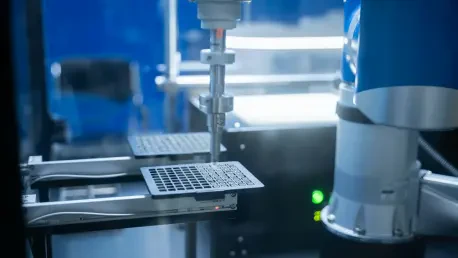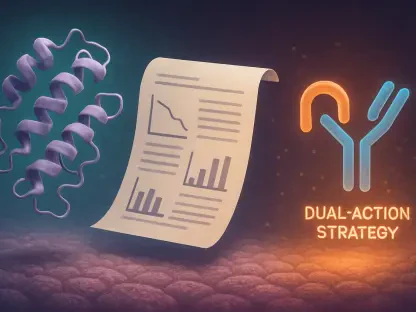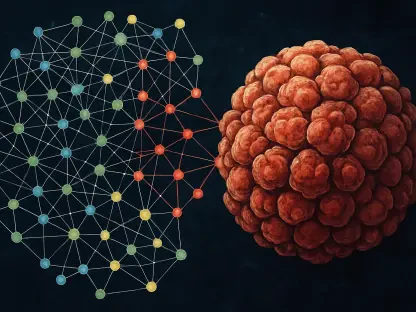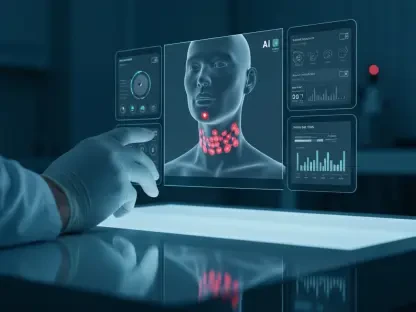The laboratory automation market stands poised on the brink of a transformative decade, projected to surge in value, reaching an anticipated $12.5 billion by 2032. This robust growth trajectory, characterized by a noteworthy compound annual growth rate (CAGR) of 8.18%, is powered by an amalgamation of demanding global healthcare challenges, persistent labor shortages, and ongoing technological advancements. At its core, laboratory automation aims to optimize processes through cutting-edge innovations, enhancing efficiency and precision in laboratory settings worldwide. The rise in automation reflects a broad commitment to operational excellence, as industries seek to meet the increasing demand for accuracy and reliability in diagnostic solutions.
Driving Forces Behind Automation
Heightened Global Healthcare Demands
The escalating burden of chronic and infectious diseases worldwide has underscored the necessity for swift and accurate diagnostic services. Laboratory automation systems have emerged as critical solutions to address these healthcare challenges efficiently. By automating routine tasks and reducing the demand for manual intervention, these systems accelerate diagnostic processes to meet the growing need for effective healthcare delivery. As global health concerns continue to evolve, laboratories are increasingly pressured to produce quick and dependable test results, thereby catalyzing the adoption of automated technologies. This trend is further propelled by technological advancements that offer laboratories the capability to conduct more extensive, complex analyses without significantly increasing turnaround times.
Labor Shortages and Technological Innovations
The global laboratory sector has faced a persistent shortage of skilled personnel, driving the demand for automated solutions capable of compensating for human resource gaps. Automated systems not only mitigate labor shortages but also enhance laboratory productivity and accuracy. The introduction of advanced technologies, such as robotic arms, automated microplate readers, and laboratory information management systems (LIMS), is crucial in this landscape. Furthermore, integrating artificial intelligence (AI) and the Internet of Things (IoT) into these systems allows for smarter, interconnected laboratory infrastructures. These advanced technologies enable real-time data analytics, predictive maintenance, and automated quality control, highlighting the essential role of automation in modern laboratory environments.
Competitive Dynamics and Market Segmentation
Key Industry Players and Strategies
Major players in the laboratory automation market, including Thermo Fisher Scientific Inc. and Danaher Corporation, are significantly shaping its competitive landscape. These companies have committed substantial resources to research and development, focusing on creating robotic systems and modular automation solutions that accommodate diverse laboratory operational needs. Strategic mergers and acquisitions have become pivotal for these firms as they seek to expand technological capabilities and market reach—especially in emerging regions like Asia-Pacific and Latin America. By positioning themselves as leaders in automation solutions, these industry giants continue to drive innovations that redefine the laboratory workflow ecosystem.
Market Segmentation Overview
The laboratory automation industry is broadly segmented by product type, application, end user, and geographic region. Among product types, liquid handling systems have emerged as dominant due to their ability to manage large sample volumes and minimize manual errors. From an application perspective, drug discovery leads the way, fueled by substantial investments in pharmaceutical research and development. The end users of laboratory automation are predominantly pharmaceutical and biotechnology companies, which reap significant benefits from automation through improved drug screening and compound management processes. Geographically, the United States leads the charge, thanks to its advanced healthcare infrastructure and substantial R&D investments.
Emerging Trends and Innovations
AI and IoT Integration in Laboratories
The seamless integration of artificial intelligence and IoT within laboratory environments is revolutionizing automation practices. These cutting-edge technologies allow for the intelligent processing of data, enabling machines to autonomously make informed decisions and provide predictive insights based on real-time analytics. By utilizing AI-driven algorithms, processes such as data interpretation, anomaly detection, and trend analysis become streamlined, supporting laboratory personnel in making informed decisions quickly. As a result, laboratories are transitioning into smart spaces that enhance effectiveness and allow for more profound data-driven discoveries, further underlining the growing importance of technological integration.
Cloud-based Solutions and Their Impact
Cloud-based laboratory information management systems and IoT-enabled instruments are paving the way for more adaptable and globally connected laboratory operations. These technologies facilitate remote management capabilities, global sample tracking, and data accessibility, providing laboratories with unprecedented operational flexibility. The accessibility of cloud-based solutions fosters a collaborative and integrated laboratory environment, where teams across the globe can work seamlessly, sharing knowledge and insights in real-time. The convergence of these technologies not only supports laboratory efficiency and innovation but also addresses the security and compliance challenges inherent in modern laboratory workflows.
Opportunities and Future Considerations
Expansion in Emerging Markets
Emerging markets such as India, China, and Brazil offer significant growth opportunities for the laboratory automation industry. These regions have seen a rise in healthcare infrastructure investments, underscoring the growing need for advanced diagnostic solutions and improved laboratory workflows. As these markets continue to expand, automation service providers are presented with promising prospects for business development and technological innovation. To capitalize on these opportunities, providers must adapt their solutions to match the specific needs and regulatory landscapes of these regions while maintaining high standards of quality and efficiency.
Sustainability and Green Laboratory Practices
The push toward environmentally sustainable and energy-efficient laboratory practices presents a burgeoning opportunity for the automation sector. Clients increasingly demand solutions that minimize environmental impact, prompting advancements in eco-friendly technologies. Developing automation systems that are both energy-efficient and reduce waste not only meets regulatory requirements but also serves as a unique selling proposition for forward-thinking firms. By innovating in this space, industry leaders can distinguish themselves competitively, establishing a benchmark for sustainable practices that benefit both the environment and the bottom line.
Strategic Collaborations and Technological Advancements
Fostering Innovation through Collaborations
Strategic collaborations between research institutions and automation technology providers are pivotal in fostering innovation and expanding capabilities within the laboratory automation market. By collaborating with academic and research centers, industry players gain access to cutting-edge research and insights that drive the development of AI-driven diagnostic tools and enable remote laboratory operations. These partnerships create an ecosystem where scientific expertise and technological innovation converge, catalyzing the creation of advanced solutions that address emerging challenges and needs within the field of laboratory science.
Impact of Regulatory Guidelines on Automation
Regulatory bodies such as the FDA and EMA are revising guidelines to better accommodate automated equipment in clinical and pharmaceutical settings. These updates aim to ensure that automation systems meet stringent quality control standards, ultimately bolstering their adoption across industries. Adhering to these standards is crucial for ensuring that automation solutions deliver reliable, safe, and compliant laboratory practices. Companies that successfully navigate these regulatory landscapes and demonstrate compliance are well-positioned to capitalize on the growing demand for automated solutions, further contributing to the sector’s dynamic evolution.
Laboratory Automation’s Future Trajectory
The laboratory automation market is poised for a dynamic decade ahead, with expectations of its value soaring to about $12.5 billion by 2032. This anticipated surge is driven by several crucial factors, including persistent global healthcare challenges, a continuous shortage of skilled labor, and the relentless pace of technological progress. Projected to grow at a compelling compound annual growth rate (CAGR) of 8.18%, laboratory automation is rapidly becoming essential in modern laboratory settings worldwide. At its heart, automation in laboratories is about optimizing processes with state-of-the-art innovations, which significantly boost both efficiency and precision. This trend underscores a broader commitment across industries to enhance operational standards and deliver high-quality diagnostic solutions. By leveraging automation, laboratories aim to tackle the rising demand for accuracy and reliability in diagnostic procedures effectively. Furthermore, as global healthcare challenges become more complex, the integration of automated systems offers a viable solution to existing constraints, allowing for faster, more accurate testing and analysis. This evolution marks a significant shift in how laboratories function, emphasizing the importance of technological integration to remain competitive and compliant with ever-evolving industry standards.









